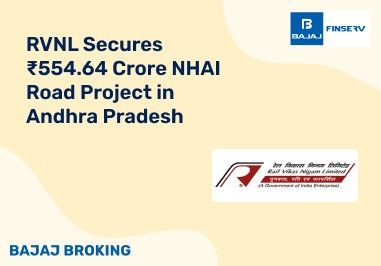What is the NPV’s Definition in Finance?
Net present value, or NPV, is one of the most important financial indicators, which is used to assess the profitability of an investment. It is the difference between the present value of cash outflows from a project and the present value of cash inflows from a project.
It is a good idea to understand NPV with an example. Suppose a pharma company has to decide whether to invest in a new drug or not. It realises that it will have to spend a huge amount on research and development (R&D) today. This is a simple example because in reality, a company may have to incur R&D expenditure over many years.
After R&D efforts, the company will be able to invent a drug within a year, which it will be able to sell for 30 years. Hence, the company will have cash inflows from this drug for the next three decades.
Simply put, it has to invest in R&D today to generate revenue for 30 years to come. It needs to calculate the present value (PV) of all the future cash inflows because they will happen in the future.
NPV is the difference between the PV of all cash inflows and the PV of all cash outflows. To calculate NPV, we need something called a “discount rate.” Now that you know NPV’s definition, let us explain how to calculate it.
What is the NPV’s Formula and How to Calculate it?
NPV can be calculated by using the following formula:
NPV = [Cash flow/(1+i)t] – Initial Investment
In this formula, “i” means the discount rate or required rate and “t” refers to the number of time periods.
Now, let us discuss how to calculate NPV. First, you need to estimate the future cash flows from a project. Once ready, a project usually provides cash inflows because it helps create a product/service, which can be sold in the market. However, a project may need capital infusion in the future, which too needs to be estimated.
Initial investment means how much investment will be needed to build a project as of today. Now, you need to decide the discount rate or “i.” It could be your cost of capital. After all, you need to generate from a project at least what you spend as the cost of capital invested in the project.
Apart from the cost of capital, there is another method to estimate “i.” You could even look at the returns generated by projects of comparable risk.
What is the IRR’s Definition in Finance?
If you are wondering what IRR is, then you must know that it is also known as the internal rate of return. IRR is a financial indicator used to estimate the profitability of an investment. When IRR is used as a discount rate, the NPV of all cash flows from a project is zero.
Let us understand the meaning of IRR with the help of an example. Suppose a company wants to build a factory. It knows the amount of investment it will require today to build a factory. This investment does not have to be discounted because it needs to be spent today.
But, this alone cannot help the company decide whether to invest in the factory. Suppose the factory has 25 years of productive life. The company will have to estimate the cash inflows from this factory for the next 25 years. As these inflows are going to occur in the future, they need to be discounted to arrive at their present value, which will be the present value of the cash inflows from the factory.
The discount rate at which the present value of all future cash inflows from the factory is equal to the present value of the investment required to build it is called the IRR.
Having learnt the IRR’s definition, let us move on to its formula.
What is the IRR’s Formula and How to Calculate it?
Now that you know what IRR is, you must learn how to calculate it. To do that, you should use this formula:
0 = CF0 + [CF1/(1+IRR)] + [CF2/(1+IRR)2] + [CF3/(1+IRR)3] +……..+ [CFn/(1+IRR)n]
Here, CF0 denotes the initial investment in a project.
CF1, CF2, CF3….. CFn denote the cash flows in the future years. N refers to the duration of a project.
Now, let us talk about how to calculate IRR. In the formula above, the initial investment (CF0) is always a negative number because it is a cash outflow. While using this formula, you will have to set the NPV equal to zero and find the IRR.
In other words, IRR is the discount rate at which a project’s NPV is zero. After CF0, you can see CF1, CF2, CF3……CFn. These are cash flows in future years. Whether they will be negative or positive depends on whether a project is likely to deliver cash inflows (positive) or cash outflows (negative).
Positive cashflows happen when a project builds a product or service, which is successfully sold in the market, helping a company record sales. Negative cashflows happen when capital infusion is needed in a project.
Comparison Between NPV and IRR
NPV and IRR are related and yet different concepts. The following table captures the differences between NPV and IRR.
Criteria
| Net Present Value (NPV)
| Internal Rate of Return (IRR)
|
Definition
| NPV is the difference between the PV. of cash inflows and the PV of cash outflows from a project.
| IRR is the discount rate at which the NPV of a project is zero.
|
Terms of Expression
| A project’s NPV is expressed in monetary terms (₹, $, etc.)
| IRR is expressed in percentage.
|
Inputs needed
| NPV requires you to know the cash inflows, the cash outflows, and the discount rate for a project.
| IRR requires you to know only the cash inflows and the cash outflows from a project. It does not need you to know the discount rate.
|
Possibility of more than one solution
| A project always has one NPV.
| A project can have multiple IRRs in a few scenarios.
|
Decision Criterion
| If a project has a positive NPV, it mostly means that it is a good project to invest in.
| If a project’s IRR is higher than the required rate of return, it is likely to be a good investment.
|
While the above table elaborates on net present value vs. internal rate of return (NPV vs. IRR), it is important to understand that both these concepts can be applied together as well depending upon the situation.
Summing Up the Differences Between NPV and IRR
If you are about to open a demat account in the Indian stock market, you should learn what NPV is and what IRR is. Both these indicators are used to examine the profitability of a project. These indicators help companies decide whether to invest in a project. That said, while NPV is expressed in monetary terms, IRR is expressed in percentage.
If the size and scale of two projects are vastly different, you should use NPV because it will tell you how much return you will generate from them in monetary terms. In such a case, an IRR percentage can be confusing. However, if two projects have similar sizes and cashflow patterns, you should use IRR. The project with a higher IRR is better than the other project that has a similar size but a lower IRR.
Disclaimer: Investments in the securities market are subject to market risk, read all related documents carefully before investing.
This content is for educational purposes only. Securities quoted are exemplary and not recommendatory.
For All Disclaimers Click Here: https://bit.ly/3Tcsfuc














